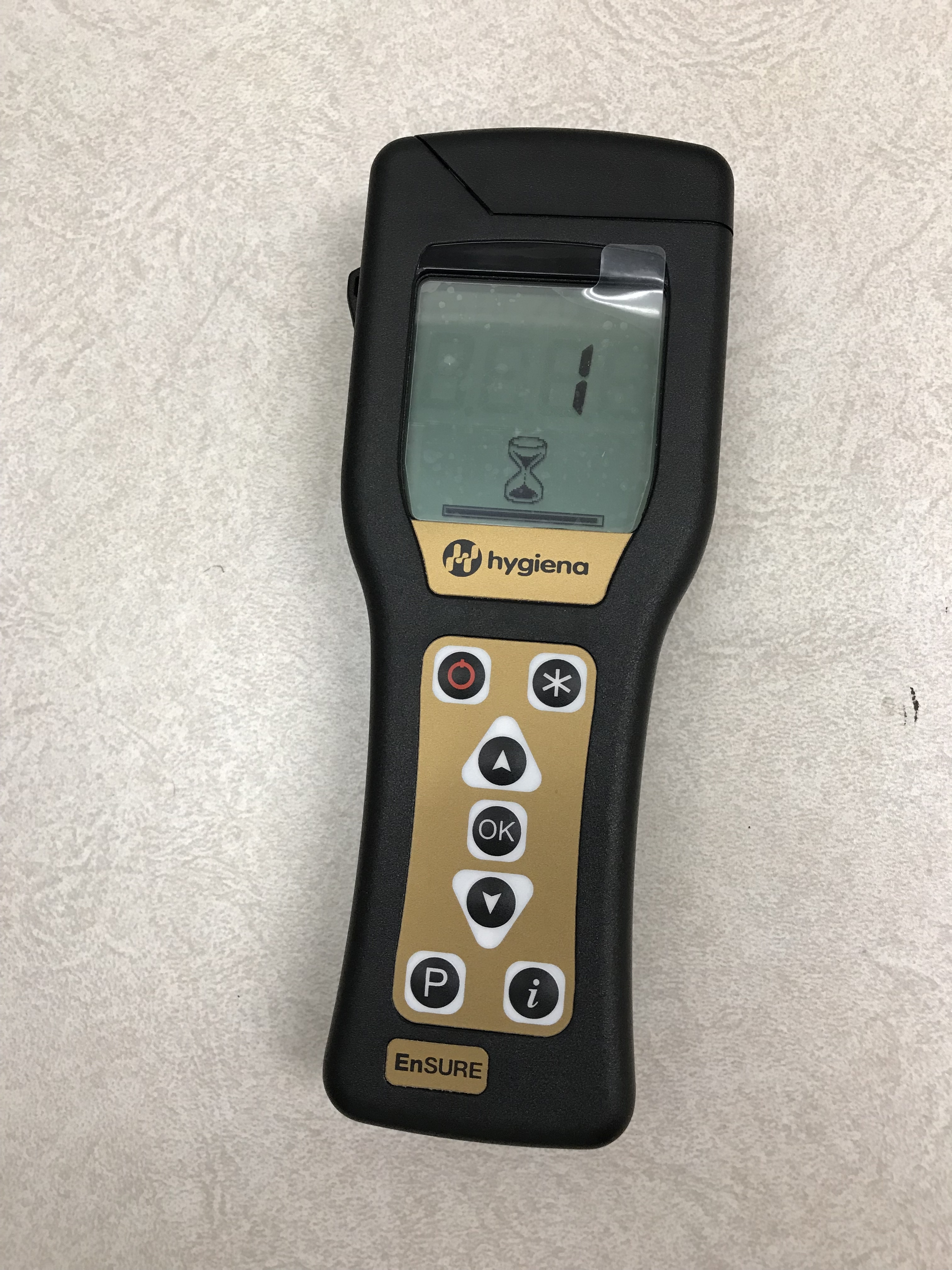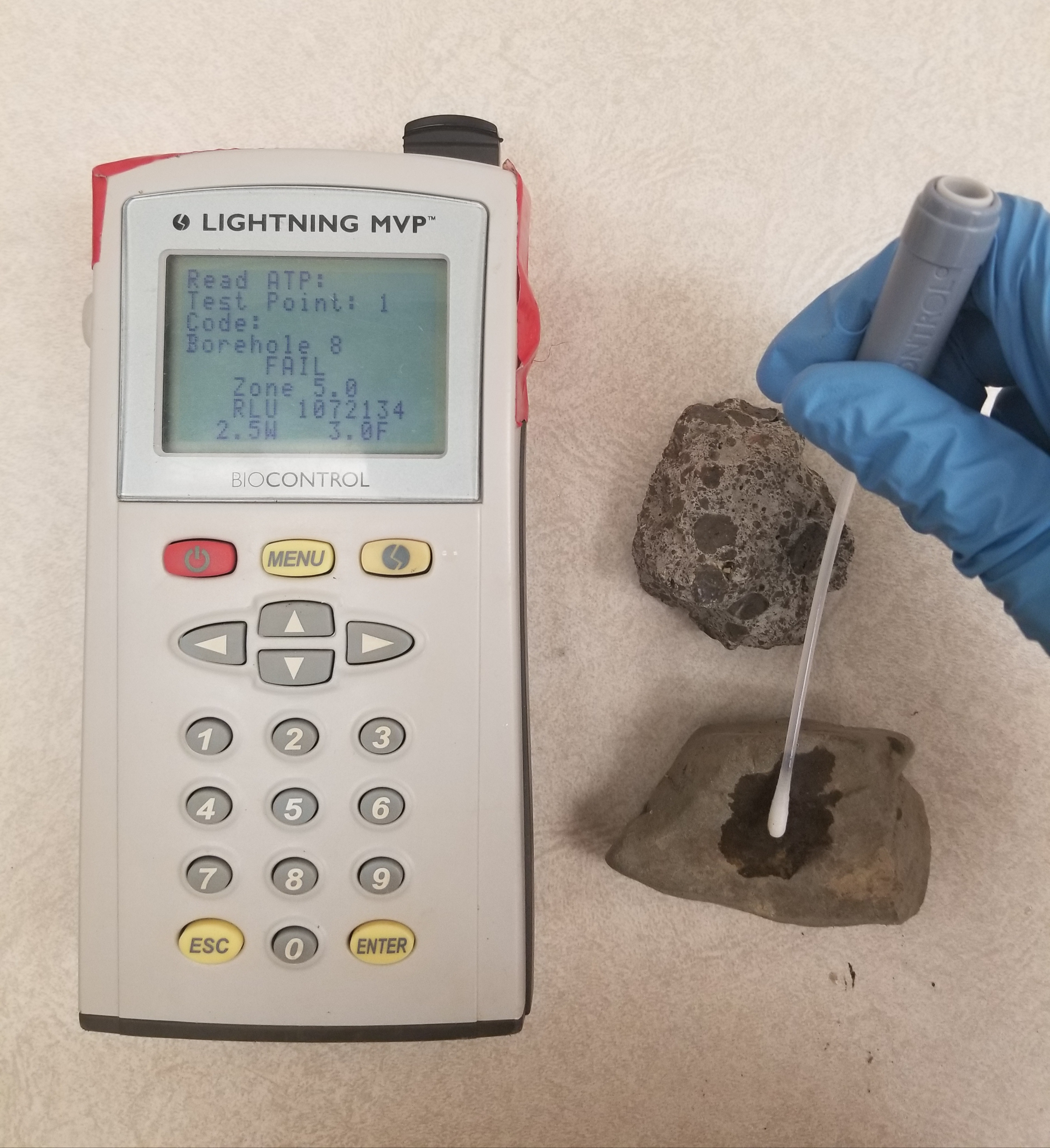What is ATP?
ATP is an organic molecule used in organisms of all domains of life as a primary energy carrier and signaling molecule. Free energy released from ATP hydrolysis is used to drive unfavorable, nonspontaneous reactions. The use of ATP to drive these reactions allows cells to survive, develop, and reproduce. The need for and presence of ATP in all life on Earth makes it a good marker for estimating biomass.
Use of ATP Luminometer
BRAILLE will analyze cave surfaces with a hand-held ATP luminometer to survey the presence of adenosine triphosphate (ATP) and estimate microbial abundance. An ATP Luminometer estimates the ATP concentration of a sample by measuring the intensity of light released from a reaction between ATP and Luciferin/Luciferase reagents. The light intensity released from this reaction is dependent on the concentration of ATP. As ATP in a sample increases, more light will be increased and the luminometer will output a higher reading in relative light units (RLU). Sampling can be done by directly swabbing a surface with a surface sampling swab. The ATP collected by the swab can then be measured by an ATP luminometer or further purified to lyse ATP from cells before reading. I will be using the Hygiena EnSURE ATP luminometer and the Biocontrol Lightning MVP ATP luminometer (shown below).


Application of ATP Luminometer during LABE Field Campaigns
ATP functions as an energy-carrying molecule and is used by all domains of life to support cellular metabolism. The amount of ATP present correlates directly with biomass. BRAILLE will examine gradients in the caves to look for variations in biomass as a function of light, humidity, temperature, human visitation, and color and textural variations on cave walls. Student researcher Daniel Milshteyn evaluations of ATP content on cave surfaces will be compared with the findings of the remote science operations team and other scientists to characterize biomarkers and assess the imaging and spectroscopic abilities of the rover to identify biomarkers.
